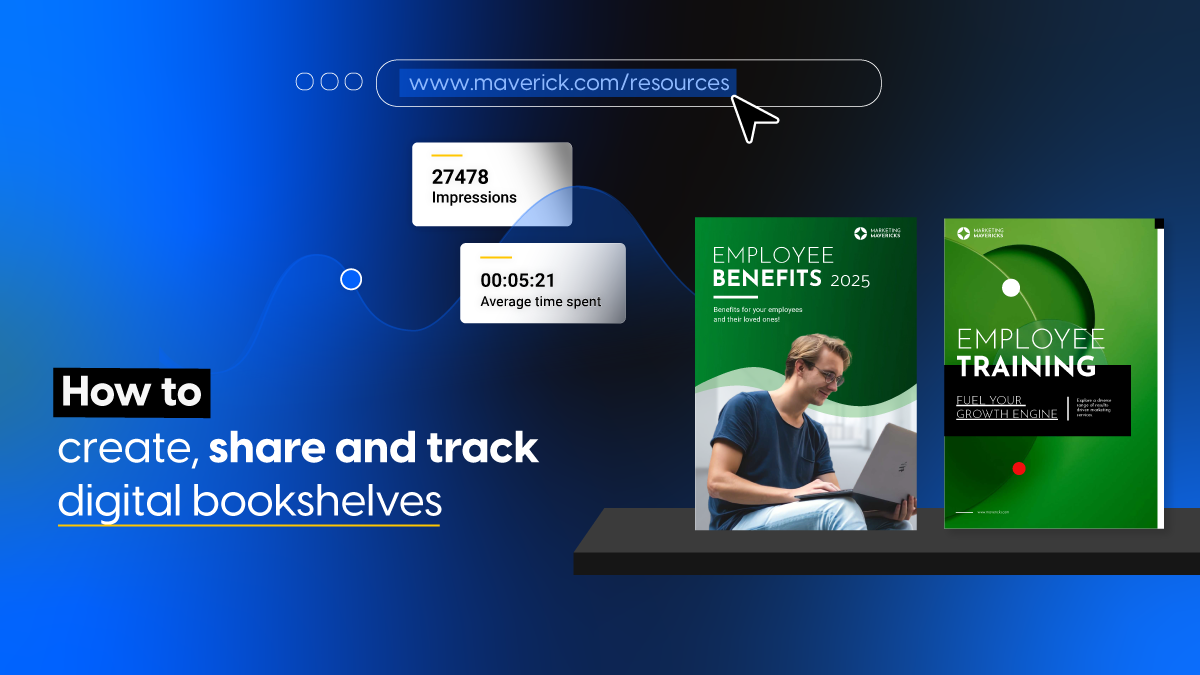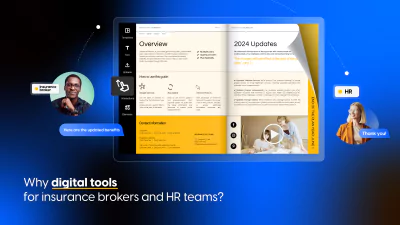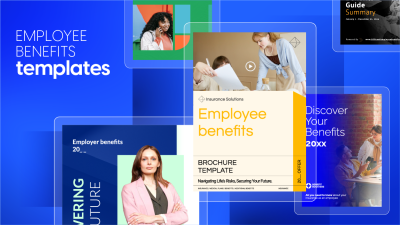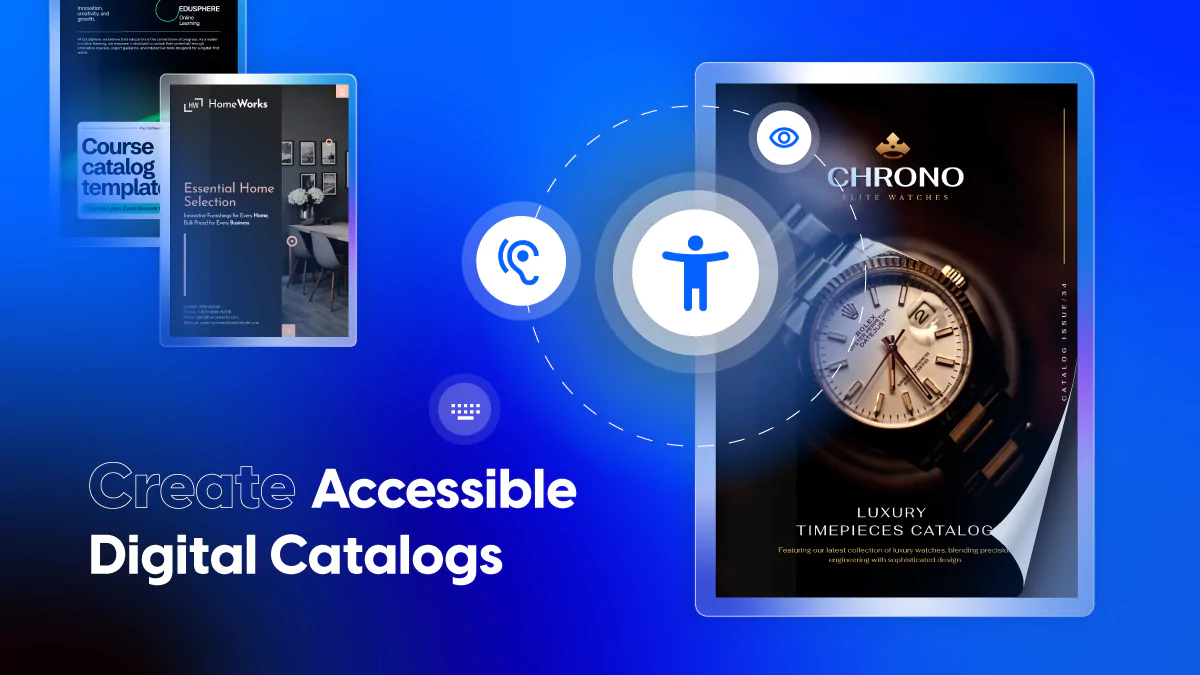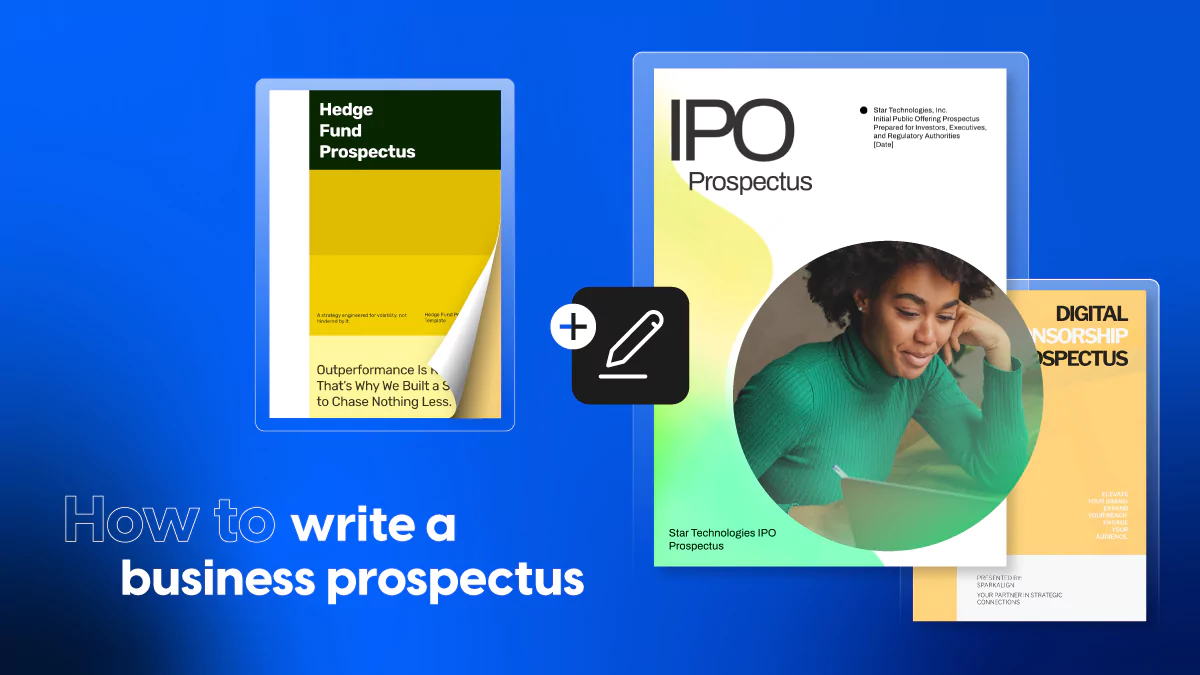How to create, share and track digital bookshelves
Last updated: May 28th, 2024
As professionals across industries seek innovative ways to streamline and enhance their content distribution, the digital transformation of organizing and sharing professional content emerges as a pivotal trend. This shift is not just about transferring files online; but about revolutionizing how we present, interact with, and manage information to create lasting impressions and build stronger connections. Flipbooks and digital bookshelves are at the forefront of this transformation, offering dynamic, engaging formats that go beyond the limitations of traditional documents.
Meet Flipsnack, a powerful tool designed to take on these advancements. With Flipsnack, marketers, sales teams, HR professionals, and training managers can convert static PDFs into vibrant flipbooks; and organize them into intuitive digital bookshelves. This approach not only elevates the aesthetic appeal of your content but also significantly improves accessibility and interaction. It also ensures your audience has a seamless, enriched experience with every page turn.

Why use flipbooks in your business?
There are more reasons for making flipbooks a part of your business than we are going to cover in this article section, but I believe that it will be enough to convince you.
To offer an interactive experience
Flipbooks transform the landscape of digital content by turning static PDFs into an immersive, interactive experience. Unlike traditional documents, flipbooks invite the audience to engage with the content in a tactile manner—flipping pages, clicking on embedded links. And exploring multimedia elements like videos and audio clips.
This level of interaction is not just a novelty; it fundamentally changes how users consume and remember information. It encourages deeper exploration and longer engagement times. For professionals looking to convey complex data or detailed narratives, flipbooks offer a dynamic platform; where every element can be a gateway to additional learning and discovery.
Moreover, the interactive nature of flipbooks makes them an excellent tool for storytelling. Whether it’s a marketing brochure, catalog, magazine, or booklet, the ability to layer information and guide the reader through a structured path enhances the clarity and impact of the message. Users are no longer passive recipients but active participants. Easily navigating through content at their own pace, which increases retention and satisfaction.
To increase visual engagement
The power of visually rich media in capturing and holding audience attention cannot be overstated. Flipbooks leverage this by allowing the integration of high-quality images, animations, videos, slideshows, and other elements that make each page pop. In a world where visual content often dictates the initial user interest, flipbooks provide a canvas to showcase your work in its best light.
This visual engagement is especially crucial in markets saturated with text-heavy content. A well-designed flipbook can break through the noise, offering a breath of fresh visual air. It has the potential to intrigue and persuade potential customers or stakeholders. There is the ability to customize professional flipbook templates, incorporate branding elements, and use color schemes strategically. This means that every flipbook can be a unique reflection of what you stand for, making your message not just seen but felt.
To distribute more easily
One of the standout benefits of flipbooks is their ease of distribution. With digital content, the barriers of physical logistics, printing costs, and time delays are eliminated. Flipbooks can be shared instantly across a multitude of platforms—be it through email, social media, or embedding in websites. This instantaneity ensures that your content reaches a wider audience faster.
Additionally, the continuous updates and revisions without the need for reprinting or redistributing physical copies is a great plus for flipbooks. Whether you’re sending out a product catalog, a training manual, or a promotional brochure, the ability to adjust and create new versions swiftly keeps your audience informed and engaged with the latest information, enhancing the effectiveness of your communication efforts.
Why use a digital bookshelf?
While flipbooks significantly enhance the way content is presented and interacted with, the need for effective organization and access remains the number one priority. This is where digital bookshelves come into play, acting as the perfect complement to the dynamic nature of flipbooks. Digital bookshelves offer a centralized location for storing and organizing all your flipbooks. This means quicker access to necessary documents, leading to increased productivity and a smoother flow of information.
Another reason to use them is to ensure that the right content reaches the right audience efficiently. Digital bookshelves excel in this area by offering various access controls and sharing options. Whether you need your content to be publicly available or restricted to select clients, digital bookshelves can accommodate these needs with customizable visibility settings.
How to create a digital bookshelf with Flipsnack
Creating a digital bookshelf with Flipsnack is a straightforward process that empowers you to efficiently manage and showcase your digital content. Here’s how to set up and personalize your own digital bookshelf step by step.
1. Upload PDFs to Flipsnack
Begin by uploading your publications to Flipsnack, laying the foundation for a comprehensive digital library accessible from anywhere. Ensure each PDF is uploaded to maintain the quality of your documents.
2. Organize your publications
Arrange your publications on the digital bookshelf, categorizing them as needed for easy user navigation. Modify the bookshelf contents anytime without changing the shared link.
3. Create & personalize
Personalize your bookshelf with custom names, logos, colors, and thumbnails to match your brand and enhance user engagement. Tailor the look to ensure seamless navigation and a professional appearance.
4. Share & track your bookshelves
Maximize your bookshelf’s reach with selective visibility, easy link sharing, website embedding, and email distribution. Use Flipsnack’s analytics to track impressions, views, and engagement to optimize content and audience interaction.

Benefits of creating digital bookshelves with Flipsnack
When starting with a new platform, a step-by-step walkthrough is the safest route. Bookshelves have a lot of capabilities when it comes to creating them with Flipsnack. So let’s take a closer look at how each of these benefits plays out.
Organized publications
To ensure your digital bookshelf remains functional and user-friendly, start by thoughtfully arranging your publications. Flipsnack allows you to categorize and order your content based on various criteria such as publication date, relevance, or topic; making it easier for users to find what they need. The drag-and-drop interface simplifies this process, enabling quick adjustments and updates. Remember, any changes made to the organization will not affect the existing shared link. This option allows seamless updates and additions without disrupting user access.
Customized appearance & enhanced UX
In Flipsnack, you can personalize your bookshelf by adding custom names, integrating your brand’s logos, and choosing specific colors that align with your brand palette. Utilizing thumbnails that resonate with the content of each publication enhances recognition and draws interest. These personal touches not only make your bookshelf more engaging but also ensure a consistent brand experience across all digital platforms.
And secondly, user experience is about improving the navigation and search functionality of your digital bookshelf. Flipsnack is a flipbook maker that offers tools to refine how users interact with your content. Including clear labeling, intuitive layout design, and advanced search capabilities. By ensuring that each publication is easily accessible and discoverable, you help users navigate through large volumes of information effortlessly.
Flexible sharing & collaboration options
Effective team collaboration is essential in content management, and Flipsnack supports this with complex tools that facilitate joint efforts. Team members can work together on the same bookshelf, making real-time updates and edits to ensure the content remains current and cohesive. The platform also allows for role assignments and permissions, enabling controlled access based on individual responsibilities. And if you’re managing files on iOS or macOS and run into issues like “read-only” restrictions, here’s a quick guide on how to change permissions to ensure your content stays editable and shareable as intended. This collaborative environment streamlines workflows and improves the efficiency of content updates and publication.
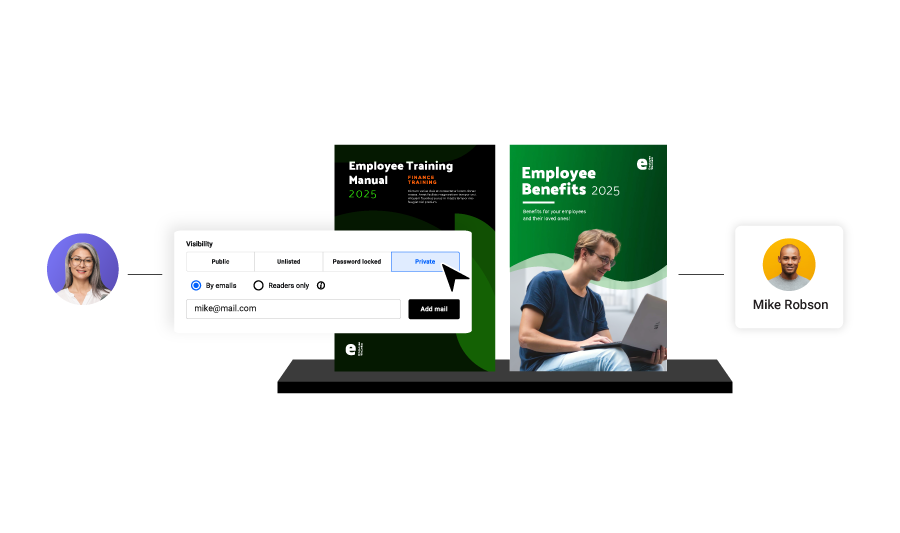
You can distribute your content with easy-to-use links that facilitate quick access; or embed your bookshelf directly on your website for seamless integration. Additionally, sending your bookshelf via email allows you to target specific individuals or groups; making it ideal for personalized marketing or internal distribution. These sharing options make it easy to disseminate your content widely while maintaining a professional look and feel.
Tracking and analytics – Individual flipbook performance
Understanding how each flipbook performs is crucial for optimizing your digital content strategy. Flipsnack provides detailed insights on how many times each flipbook has been opened, and the duration of engagement. Plus user interactions with specific elements within the pages. These metrics help you gauge the effectiveness of your content, identify popular topics, and discern patterns that can inform future updates or new publications.
For deeper analysis and strategic decision-making, Flipsnack allows you to export analytics reports. The ability to export this data ensures that you can integrate it with other business intelligence tools for a holistic view of your content’s performance. This feature supports informed decisions, helping you maximize the impact and reach of your digital bookshelf.
Who can benefit from Flipsnack bookshelves?
To fully appreciate the versatility of Flipsnack bookshelves, it’s essential to explore the diverse range of professionals who stand to benefit from this innovative tool. From enhancing marketing efforts to streamlining sales processes and optimizing training initiatives; Flipsnack bookshelves adapt seamlessly to meet the unique needs of various roles within any organization. Here’s how different professionals can leverage these digital bookshelves to their advantage:
Marketing professionals
For marketers, Flipsnack bookshelves offer a dynamic way to align digital content with various marketing strategies and brand objectives. In the context of organizing campaigns, product catalogs, and promotional materials on customized digital bookshelves; marketers can ensure that their content is not only attractive but also strategically presented. This customization allows for targeted messaging that resonates with different audience segments. Moreover, it enhances the effectiveness of marketing efforts and maintaining a consistent brand experience across all digital touchpoints.
Sales teams
Sales teams can significantly enhance their effectiveness with personalized digital bookshelves. By equipping sales agents with bookshelves tailored to specific clients and regions, they ensure that each interaction is backed by the most relevant and persuasive content. This approach allows for quick adjustments to presentations and proposals, reflecting the unique needs and interests of each client. It also streamlines the sharing of updated product information and sales materials; keeping the entire team informed and ready to engage effectively.
HR & training managers
HR and training managers find immense value in using Flipsnack bookshelves to centralize onboarding and training materials. This centralization ensures that all employees, regardless of location, have consistent and easy access to necessary resources. By organizing these materials into dedicated digital bookshelves, HR professionals can facilitate an efficient and interactive learning environment. This setup not only simplifies the management of educational content but also allows for real-time updates and feedback. A useful option that enhances the overall effectiveness of training programs.
Last arguments for digital flipbooks and bookshelves
As we’ve explored, the transformative power of Flipsnack’s digital bookshelves and flipbooks is evident in their ability to enhance organization, elevate visual engagement, and ensure targeted accessibility for all types of professional content. From marketers and sales teams to HR and training managers, the versatility and functionality of Flipsnack’s offerings promise not just an improvement but a revolution in how content is managed and distributed.
We encourage you to dive into the world of Flipsnack and experience firsthand the potential it holds for your organization. Whether you’re looking to refine your marketing strategies, streamline your sales processes, or centralize training materials, Flipsnack provides the tools and features you need to create custom digital bookshelves that resonate with your audience and reflect your brand’s identity.

Don’t miss the opportunity to transform your content management and distribution strategies. Start creating with Flipsnack today, and take the first step towards a more organized, engaging, and efficient digital content experience. Your journey to enhanced professional content begins here.
